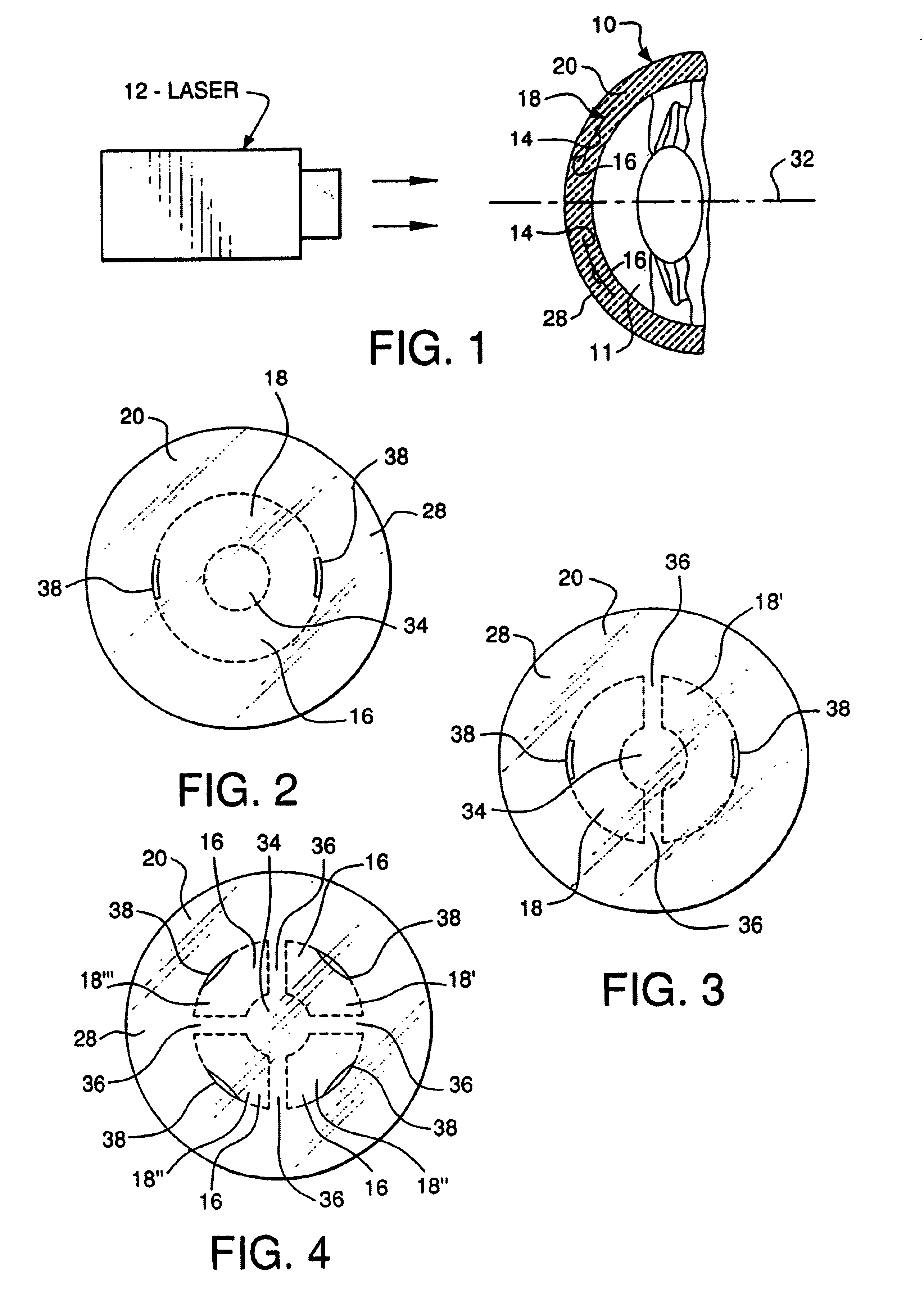Adjustable ablatable inlay
a technology of inlay and cornea, which is applied in the field of modifying a live cornea, can solve the problems of difficult access to the separated area to insert the inlay, the cornea is not easily damaged, so as to avoid or eliminate outbulging or instability, avoid or eliminate most of the risks of damage, and achieve precise separation
- Summary
- Abstract
- Description
- Claims
- Application Information
AI Technical Summary
Benefits of technology
Problems solved by technology
Method used
Image
Examples
Embodiment Construction
[0042]As initially shown in FIGS. 1, 2 and 19-24, the refractive properties of eye 10 can be altered by using laser 12 to separate an inner portion of the cornea into first internal corneal surface 14 and second internal corneal surface 16, creating internal corneal pocket 18 in the cornea 20 and then placing ocular material or an implant 22 in the pocket 18. Additionally, the cornea can be shaped by using a second laser 24 to ablate a portion 26 of the surface 28 of the cornea 16, or an external lens 29 to mold the ocular material.
[0043]To begin, the refractive error in the eye is measured using wavefront technology, as is known to one of ordinary skill in the art. For a more complete description of wavefront technology see U.S. Pat. No. 6,086,204 to Magnate, the entire contents of which is incorporated herein by reference. The refractive error measurements are transmitted to a computerized lathe (not shown) or other lens-shaping machine, where the shape of ocular material is deter...
PUM
 Login to View More
Login to View More Abstract
Description
Claims
Application Information
 Login to View More
Login to View More - R&D
- Intellectual Property
- Life Sciences
- Materials
- Tech Scout
- Unparalleled Data Quality
- Higher Quality Content
- 60% Fewer Hallucinations
Browse by: Latest US Patents, China's latest patents, Technical Efficacy Thesaurus, Application Domain, Technology Topic, Popular Technical Reports.
© 2025 PatSnap. All rights reserved.Legal|Privacy policy|Modern Slavery Act Transparency Statement|Sitemap|About US| Contact US: help@patsnap.com



